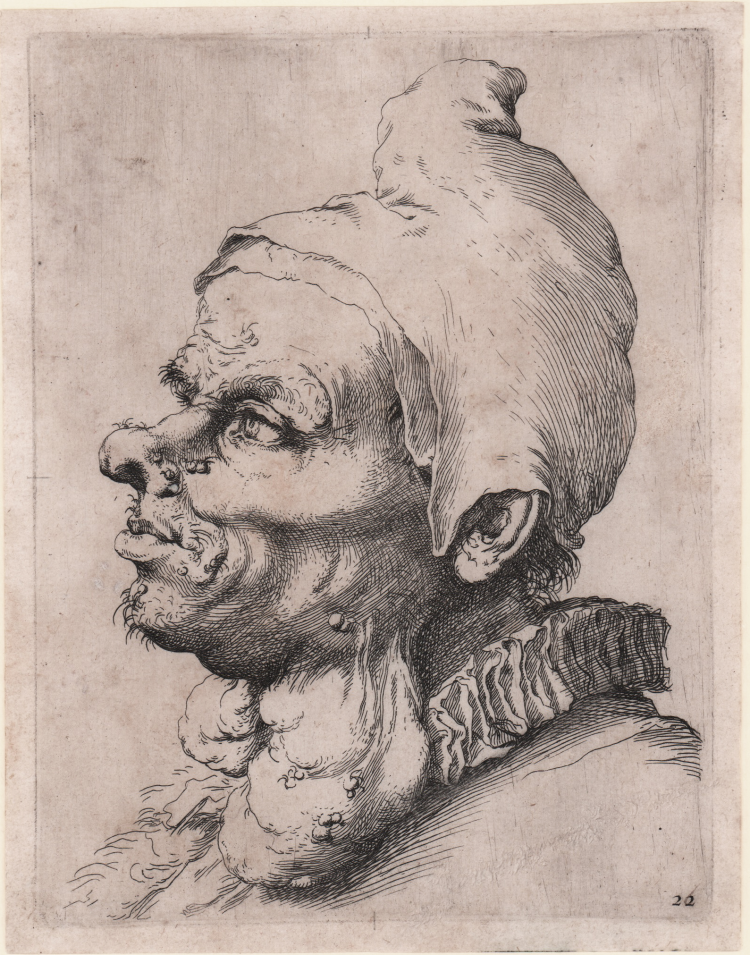




| Reference: | S28311 |
| Author | Cerchia di RIBERA |
| Year: | 1640 ca. |
| Measures: | 120 x 160 mm |



| Reference: | S28311 |
| Author | Cerchia di RIBERA |
| Year: | 1640 ca. |
| Measures: | 120 x 160 mm |
Etching, circa 1640, unsigned.
Magnificent proof, rich tone, printed on contemporary laid paper without watermark, with narrow margins, small wormholes perfectly restored at the bottom, otherwise in excellent condition.
The works is a counterpart copy of rare etching by Ribera, in the example of the second state, bearing the initials of the engraver, publisher and print dealer Flemish Frans van den Wyngaerde (1614-1679). The print shows a man suffering from Alzheimer's Reclinghausen (neuro fibromatosis multiple) which is manifested by the appearance of large benign tumors. Possible that is made for a planned, but never completed, a manual for beginners artists, a sort of compendium for design very popular in the artists of the period. Possible that this work may be assigned to Frans van den Wyngaerde himself.
Rare.
|
The Illustrated Bartsch 9; Brown 11; Salamon, Josepe de Ribera, 13.
|
Cerchia di RIBERA (Iativa di Valenza 1591 – Napoli 1652)
|
Spanish painter and printmaker, active in Italy. He was one of the most important figures in European painting in the 17th century and one of the major artists of the Counter-Reformation. Though Spanish, he spent his entire career in Italy, and his evolution reflected developments in Italian art at that time. His first works show the influence of northern followers of Caravaggio active in Rome. He subsequently incorporated elements of Venetian art and, in his last works, combined all the sensual and colourist opulence of both Venice and Flanders, creating new and highly personal compositions.
|
|
The Illustrated Bartsch 9; Brown 11; Salamon, Josepe de Ribera, 13.
|
Cerchia di RIBERA (Iativa di Valenza 1591 – Napoli 1652)
|
Spanish painter and printmaker, active in Italy. He was one of the most important figures in European painting in the 17th century and one of the major artists of the Counter-Reformation. Though Spanish, he spent his entire career in Italy, and his evolution reflected developments in Italian art at that time. His first works show the influence of northern followers of Caravaggio active in Rome. He subsequently incorporated elements of Venetian art and, in his last works, combined all the sensual and colourist opulence of both Venice and Flanders, creating new and highly personal compositions.
|